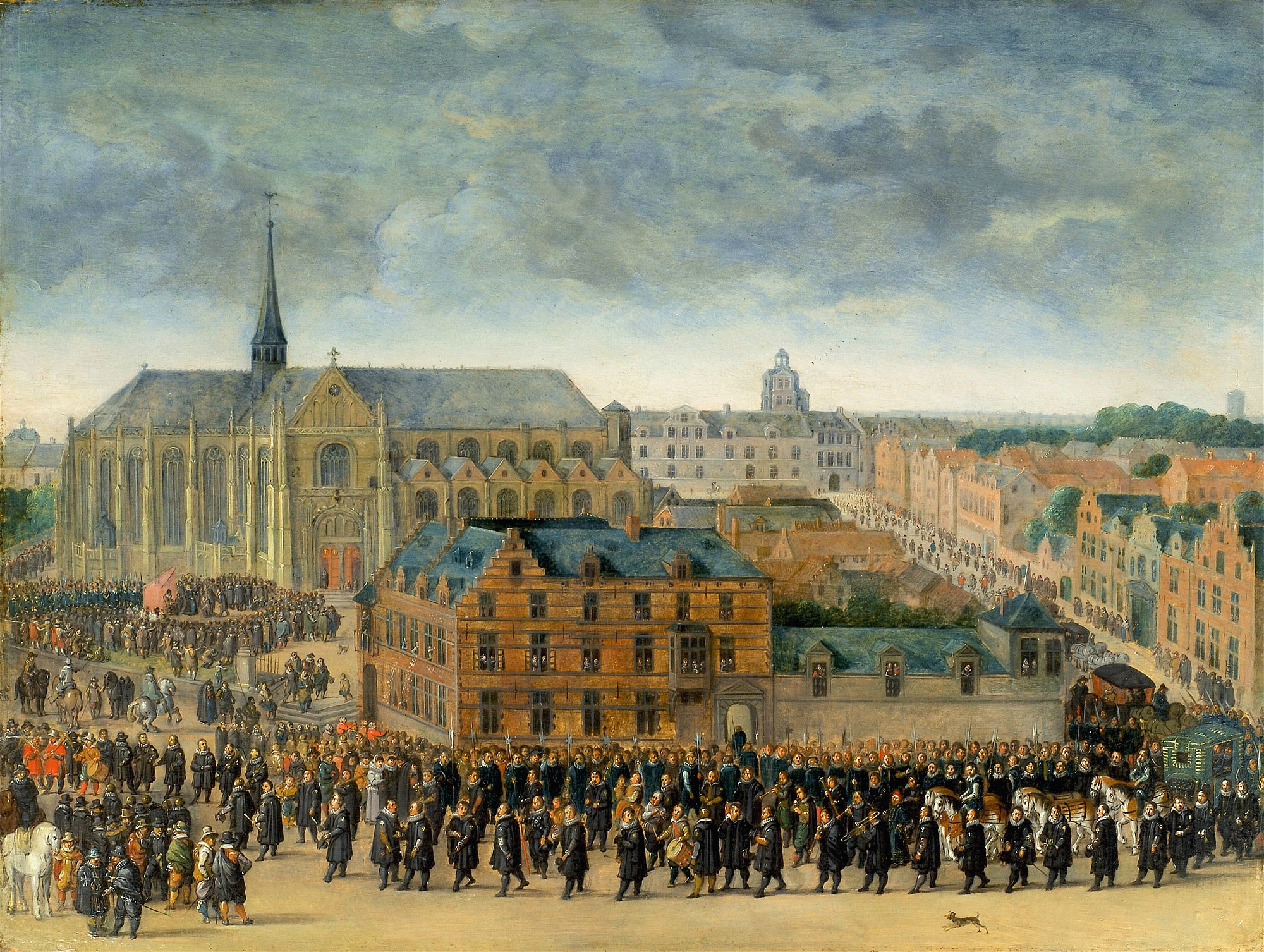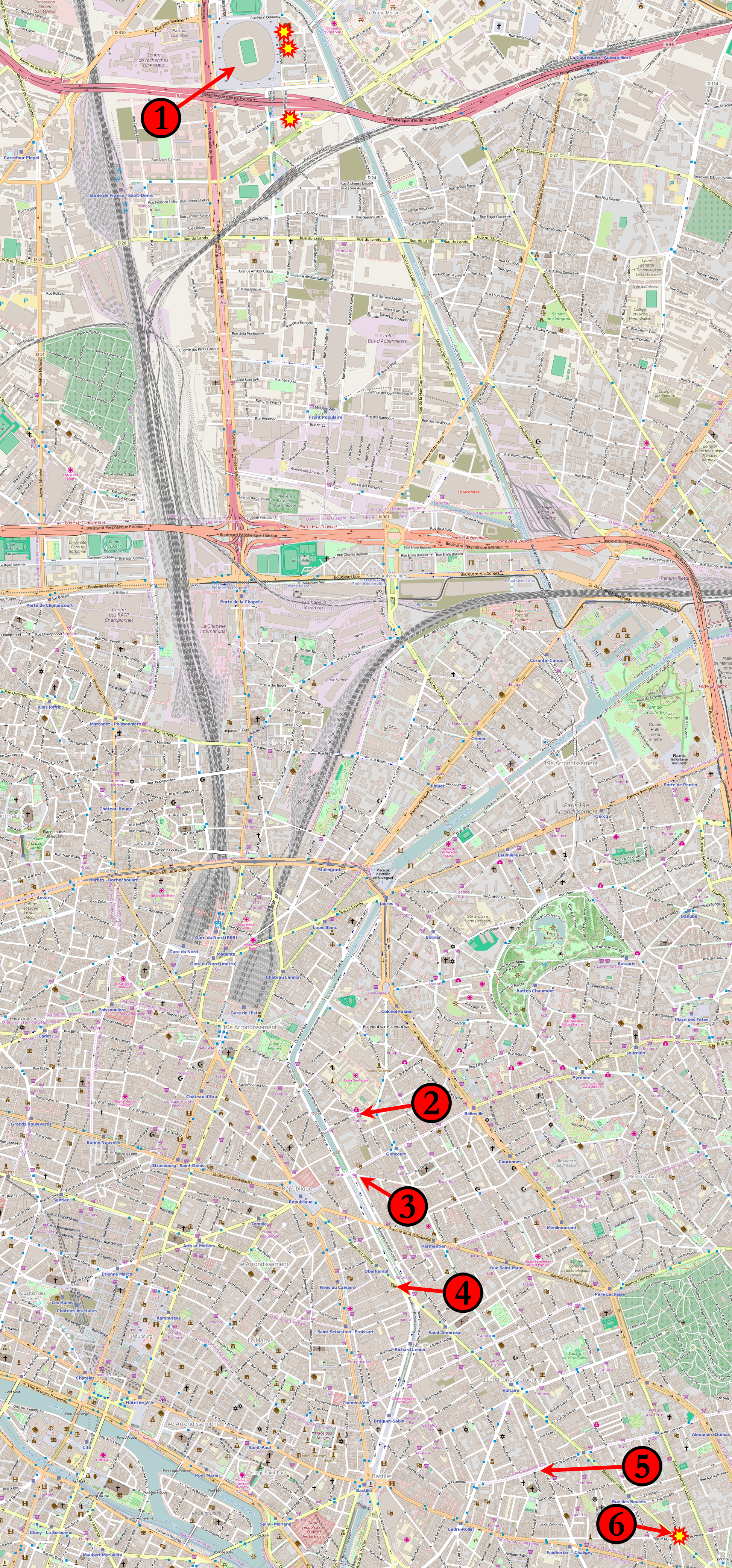|
St V
Saint V is the commonly used name for a holiday for freethinking university students in Brussels, Belgium, celebrating the founding of the Free University of Brussels. The day's long form (french: Saint-Verhaegen, nl, Sint-Verhaegen) differs in the two official languages, but both are a reference to Pierre-Théodore Verhaegen, the founder of the university, who notably is not a saint and was never canonized; the name was chosen to mock the ''Saint-Nicolas'' festivities of the rival Catholic University instead. The festivities take place on November 20, commemorating the anniversary of the university's official opening. It is celebrated by students of both the Université Libre de Bruxelles and the Vrije Universiteit Brussel, which officially separated in 1970. Origins The event dates back to November 20, 1888, when students of the university organized to protest a university reorganization that was perceived as undemocratic and against the principle of ("libre examen" in Fr ... [...More Info...] [...Related Items...] OR: [Wikipedia] [Google] [Baidu] |
Sablon, Brussels
The () or (Dutch) is a neighbourhood and hill in the historic upper town of Brussels, Belgium. At its heart are twin squares: the larger or ("Large Sablon") square in the north-west and the smaller or ("Small Sablon") square and garden in the south-east, divided by the Church of Our Blessed Lady of the Sablon. This area is served by Brussels-Chapel railway station and Brussels Central Station, as well as the tram stop / (on lines 92 and 93). History Early history The Sablon lies near the Mont des Arts/Kunstberg neighbourhood, and lay not far outside the first walls of Brussels. It was originally an unused open space, with areas of wetlands, grassland and sand, where a hermit made his home. The words in French and in Dutch both mean a fine-grained sand, halfway between silt and sand. Saint John's Hospital (french: Hôpital Saint-Jean, link=no, nl, Sint-Jansgasthuis, link=no) used the area as a cemetery in the 13th century, having run out of space in its own cemetery. ... [...More Info...] [...Related Items...] OR: [Wikipedia] [Google] [Baidu] |
Student Culture
A student is a person enrolled in a school or other educational institution. In the United Kingdom and most commonwealth countries, a "student" attends a secondary school or higher (e.g., college or university); those in primary or elementary schools are "pupils". Africa Nigeria In Nigeria, education is classified into four system known as a 6-3-3-4 system of education. It implies six years in primary school, three years in junior secondary, three years in senior secondary and four years in the university. However, the number of years to be spent in university is mostly determined by the course of study. Some courses have longer study length than others. Those in primary school are often referred to as pupils. Those in university, as well as those in secondary school, are referred to as students. The Nigerian system of education also has other recognized categories like the polytechnics and colleges of education. The Polytechnic gives out National Diploma and Higher Nation ... [...More Info...] [...Related Items...] OR: [Wikipedia] [Google] [Baidu] |
Royal Theatre Toone
The Royal Theatre Toone (french: Théâtre royal de Toone, nl, Koninklijk Poppentheater Toone), often simply referred to as Toone, is a folkloric theatre of marionettes in central Brussels, Belgium, active since 1830, and the only traditional Brussels puppet theatre still in operation. Originally founded by Antoine "Toone" Genty in the Marolles/Marollen district of Brussels, since 1966, the theatre has been located at the end of two narrow alleyways, at 66, /, near the Grand-Place/Grote Markt (Brussels' main square). The theatre's premises also house a tavern and a small puppetry museum. The current director is Nicolas Géal, also known as Toone VIII. The theatre still puts on puppet plays in the Brusselian dialect (also sometimes referred to as Marols or Marollien), the traditional Brabantian dialect of Brussels. Performances are also given in other languages interspersed with Brusselian, always in the spirit of '' zwanze'', a sarcastic form of folk humour considered typic ... [...More Info...] [...Related Items...] OR: [Wikipedia] [Google] [Baidu] |
Meyboom
The Meyboom plantation (or Meiboom in Dutch, "May tree" – a bastardisation of the Dutch ''tree of joy'') is the oldest tradition in Brussels, Belgium, attested since 1308. It is held every year on 9 August, the eve of St Lawrence's Day, and consists mainly in planting a beech at the intersection of the / and the / in the City of Brussels' Marais–Jacqmain District. It is accompanied by processions and various folk activities during the day. The celebration is reminiscent of Brussels' long-standing (folkloric) feud with Leuven, which dates back to the Middle Ages. Following a friendly incident in 1974 in which the Meyboom was stolen and brought to Leuven, both cities have claimed to be planting the "real" Meyboom. Since 2008, it is recognised as a Masterpiece of the Oral and Intangible Heritage of Humanity by UNESCO. History According to tradition, the celebration commemorates a victory of Brussels over the nearby Flemish town of Leuven in 1213. The ''Companions of St Lawren ... [...More Info...] [...Related Items...] OR: [Wikipedia] [Google] [Baidu] |
Ommegang Of Brussels
The Ommegang of Brussels (french: Ommegang de Bruxelles, nl, Ommegang van Brussel) is a traditional Ommegang, a type of medieval pageant, celebrated annually in Brussels, Belgium. Originally, the Ommegang was the largest lustral procession of Brussels, taking place once a year, on the Sunday before Pentecost. Since 1930, it has taken the form of a historical reenactment of the Joyous Entry of Emperor Charles V and his son, Philip II, in Brussels in 1549. As such, it joins the tradition of the great processions of notable riders and giants that are found everywhere in Belgium and northern France. Nowadays, the event takes place twice a year, at the turn of June and July. It is organised by ''Ommegang Oppidi Bruxellensis'', an association close to the City of Brussels. Its starting point is in the Sablon/Zavel district in Brussels' historic centre and it ends with a large spectacle at the Grand-Place/Grote Markt (Brussels' main square). Since 2019, it is recognised as a ... [...More Info...] [...Related Items...] OR: [Wikipedia] [Google] [Baidu] |
Culture Of Belgium
Belgian culture involves both the aspects shared by all Belgians regardless of the language they speak and the differences between the main cultural communities: the Dutch-speaking Belgians (Flemish) and the French-speaking Belgians (mostly Brussels and Walloon people). Most Belgians view their culture as an integral part of European culture. The territory corresponding to present-day Belgium having always been located at the meeting point of Germanic and Latin Europe, it benefited from a rich cross-fertilization of cultures for centuries. Due to its strategic position in the heart of Europe, Belgium has been at the origin of many European artistic and cultural movements. Famous elements of the Belgian culture include gastronomy ( Belgian beers, fries, chocolate, waffles, etc.), the comic strip tradition (Tintin, the Smurfs, Spirou & Fantasio, the Marsupilami, Lucky Luke, Largo Winch, etc.), painting and architecture (the Art Nouveau, the Mosan art, the Early Netherlandish ... [...More Info...] [...Related Items...] OR: [Wikipedia] [Google] [Baidu] |
History Of Brussels
Brussels (french: Bruxelles or ; nl, Brussel ), officially the Brussels-Capital Region (All text and all but one graphic show the English name as Brussels-Capital Region.) (french: link=no, Région de Bruxelles-Capitale; nl, link=no, Brussels Hoofdstedelijk Gewest), is a region of Belgium comprising 19 municipalities, including the City of Brussels, which is the capital of Belgium. The Brussels-Capital Region is located in the central portion of the country and is a part of both the French Community of Belgium and the Flemish Community, but is separate from the Flemish Region (within which it forms an enclave) and the Walloon Region. Brussels is the most densely populated region in Belgium, and although it has the highest GDP per capita, it has the lowest available income per household. The Brussels Region covers , a relatively small area compared to the two other regions, and has a population of over 1.2 million. The five times larger metropolitan area of Brussels co ... [...More Info...] [...Related Items...] OR: [Wikipedia] [Google] [Baidu] |
Bourgeois Of Brussels
In City of Brussels, Brussels, as in most European cities, one needed the capacity of Bourgeoisie, bourgeois (equivalent to German Burgher (title), burgher or English Burgess (title), burgess; in French ''bourgeois'' or ''citoyen'' ''de Bruxelles''; in Dutch ''poorter'' or ''borger'' ''van Brussel''; in Latin ''civis'' or ''oppidanus'' ''Bruxellensis'') in order to not only exercise Civil and political rights, political rights, but also to practice a Craft, trade, which, in Brussels, meant to be a member of the Guilds of Brussels, Guilds or of the Seven Noble Houses of Brussels, Seven Noble Houses. The charter of Brussels, as codified in 1570 in articles 206 and following, provided the conditions of admission to the bourgeoisie of the city. The Bourgeois were the Patrician (post-Roman Europe), patrician class of the city. This social class was abolished by Napoleon during the History of Belgium#French control, French occupation. Capacity of bourgeois The non-bourgeois inhabitan ... [...More Info...] [...Related Items...] OR: [Wikipedia] [Google] [Baidu] |
World War II
World War II or the Second World War, often abbreviated as WWII or WW2, was a world war that lasted from 1939 to 1945. It involved the vast majority of the world's countries—including all of the great powers—forming two opposing military alliances: the Allies and the Axis powers. World War II was a total war that directly involved more than 100 million personnel from more than 30 countries. The major participants in the war threw their entire economic, industrial, and scientific capabilities behind the war effort, blurring the distinction between civilian and military resources. Aircraft played a major role in the conflict, enabling the strategic bombing of population centres and deploying the only two nuclear weapons ever used in war. World War II was by far the deadliest conflict in human history; it resulted in 70 to 85 million fatalities, mostly among civilians. Tens of millions died due to genocides (including the Holocaust), starvation, ma ... [...More Info...] [...Related Items...] OR: [Wikipedia] [Google] [Baidu] |
November 2015 Paris Attacks
The November 2015 Paris attacks () were a series of coordinated Islamist terrorist attacks that took place on Friday, 13 November 2015 in Paris, France, and the city's northern suburb, Saint-Denis. Beginning at 9:15p.m., three suicide bombers struck outside the Stade de France in Saint-Denis, during an international football match, after failing to gain entry to the stadium. Another group of attackers then fired on crowded cafés and restaurants in Paris, with one of them also detonating an explosive, killing himself in the process. A third group carried out another mass shooting and took hostages at an Eagles of Death Metal concert attended by 1,500 people in the Bataclan theatre, leading to a stand-off with police. The attackers were either shot or blew themselves up when police raided the theatre. The culprits killed 130 people, including 90 at the Bataclan theatre. Another 416 people were injured, almost 100 critically. Seven of the attackers were also killed. The attacks w ... [...More Info...] [...Related Items...] OR: [Wikipedia] [Google] [Baidu] |







